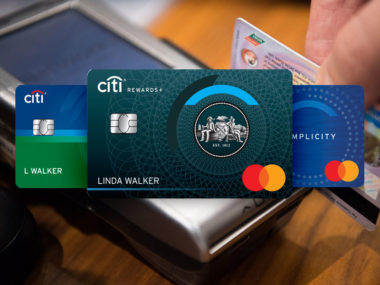Student life can be stressful and expensive. If you’re coming up short on your student loans or just need extra money for housing, food, or other essentials where can you make up the cash? Today we’re going to discuss all the ins and outs of student credit cards and secured credit cards. Get out your pens and paper, we’re going to teach you everything you need to know.
Table of Contents
What is a Student Credit Card?
A student credit card is a line of credit opened in the name of a student. The card works identically to a regular credit card in many ways. First, the qualified individual is allotted a certain amount of funds provided by the bank that they can spend. Once any amount of money is spent, the cardholder is required to pay back the funds based on an agreed upon monthly sum. Each time the funds are paid back, the cardholder’s credit score is affected positively.
How is it Different From Other Credit Cards?
Student credit cards have several benefits aside from just lending you money. Namely, these credit cards are meant to be manageable for young folks and students. The interest rates are relatively low, the max spending amount is generally quite low, and you may even qualify for credit card rewards (depending on who your lender is).
Do some research on the company that you want to apply with. To sweeten the deal even further, they may offer zero to very low fees, cash back on certain purchases, and no penalties for late payments. This will vary from lender to lender, but these are some of the perks you can expect if you choose to open a line of student credit.
How Do I Qualify?
This is where things can get a little bit tricky. Many large student credit card providers, like Visa, Mastercard, and Discover, may have credit requirements to qualify for the card. These requirements can be hard to achieve if you’re a student with no credit. Credit cards with late payment forgiveness, rewards, and a high spending limit might require a fairly high credit score, even though they are marketed as “student credit cards.” This is why you’ll want to understand all aspects of the card you’re applying for before you ever submit your application. You may also want to check out some credit unions or local banks in your area to see if their qualifications differ from larger providers.
So, how do you qualify? You’ll either need to have a little bit of credit already or find a provider that will accept no credit history. Please be wary of any scams out there. If your card issuer isn’t using one of the major card companies (Visa, American Express, Discover, or Mastercard) you need to be sure it’s 100 percent legitimate. Cards issued through your bank or credit union rarely use anything besides these companies. Going through a bank or credit union is the safest way to get a credit card, not online through a site that may or may not be a scam.
If you cannot qualify for a student credit card through your bank, ask them about secured credit cards.
What Does “Secured Credit Card” Mean?
Secured credit cards are similar to prepaid credit cards, but they do work a little bit differently. You do not always need a credit history to qualify for them. However, in order to get the card, the user must qualify and put down a spending deposit. Your lender will hold onto this deposit and allow you a spending limit based on your qualifications and the amount of your deposit.
You might be wondering, “How is that different than a debit card or a prepaid card?” Well, the difference is that you aren’t spending your own money. Your deposit is held and the bank gives you a line of credit equal to or greater than your deposit. You can then spend the money as you see fit. Once the funds are spent, the institution expects them to be paid back. In return, your credit score is built over time. This means that if you’re suffering from bad credit or have little to no credit, you can build up a history of good credit and eventually switch over to a student credit card or traditional credit card.
Once you close your line of credit, you’ll get back the deposit that you put down. Although, one drawback of this card is the fact that interest rates can be higher than student credit cards or traditional credit cards. Essentially, the bank is taking a small risk lending to someone with no credit or little credit. So, interest rates are commonly significantly higher with secured credit cards.
What Do I Need to Know About Interest Rates?
Interest is accrued on funds after they are spent. For example, if you have a $500 secured credit card at 20 percent Annual Percentage Rate, you should expect to pay $100 in interest over the course of a year. Let’s say you’re planning budget to pay for student loans. You’d most likely need to pay a deposit of $500 to the bank, then plan to pay $100 more in interest that year, not counting any fees that the institution might collect. Common interest rate ranges for secured credit cards are around 15 – 25 percent, but usually live around the 19 – 24 percent range.
If the interest rates on secured credit cards are intimidating you, just know that most students find that they can build up enough positive credit within one year that they can move onto a student credit card or traditional credit card with lower interest rates. It really is a very low risk way of ensuring that you get 100 percent of your deposit back and build enough credit to move on to bigger lines of credit (like what you’ll need for an apartment or auto loan).
As for a student credit card, you should expect to see somewhere around 12 – 20 percent APR. Most cards land in a sweet spot of about 13 – 15 percent APR.
Again, for either of these options you may be able to find some rewards just for opening a line of credit. Check for things like “0 percent APR for 6 months” or 1 percent rewards on all purchases. While the rewards are nice, no interest for 6 months is much nicer. Take you time comparing cards and decide which interest plan works best for your financial situation.
How Does Paying It Back Work?
This is another area you’ll want to learn before signing up for a credit card. You may need to go into your bank or give them a call to get all the details. Some fine prints aren’t listed under the basic outline of a credit card. For example, some banks may give you a flat rate for your monthly payments (usually $25-75). Others may calculate a minimum monthly payment based upon the amount you spent that month or your overall outstanding balance, which can make your monthly payment higher.
Let’s say you spent $1,000 this month on your credit card and your bank has a 2 percent minimum calculation rate. That means you will have to pay back $20 plus any interest that you accrued on the amount spent. If your interest rate is 15 percent, you’ll be looking at about $12.50 in interest. In addition, you may have some fees from the bank that you’ll need to take care of. Let’s just say your monthly fee is $7 per month. Realistically, you’ll be looking at about a $40 per month payment as long as you use that credit card and pay off your $1000 line of credit.
All in all, student credit cards and secured credit cards are an excellent way for students to pay for schooling or additional expenses while they are in college. Low monthly payments, manageable interest rates, and additional rewards and benefits (only available to students), make this an excellent option for those looking for a low commitment way to build credit and pay for the essentials.
Need more information on credit cards before you commit to one? Learn more at our credit card resource center. Want to improve your credit score to decrease your interest rates? Visit our credit score resource center for tips and guides.
Image source: https://pixabay.com/





